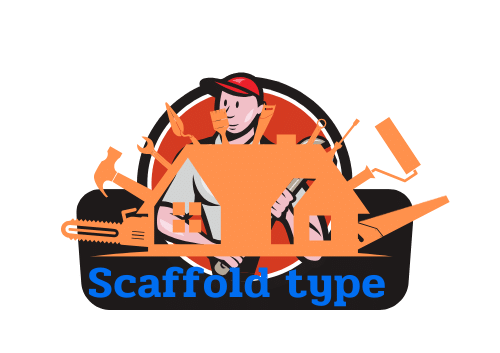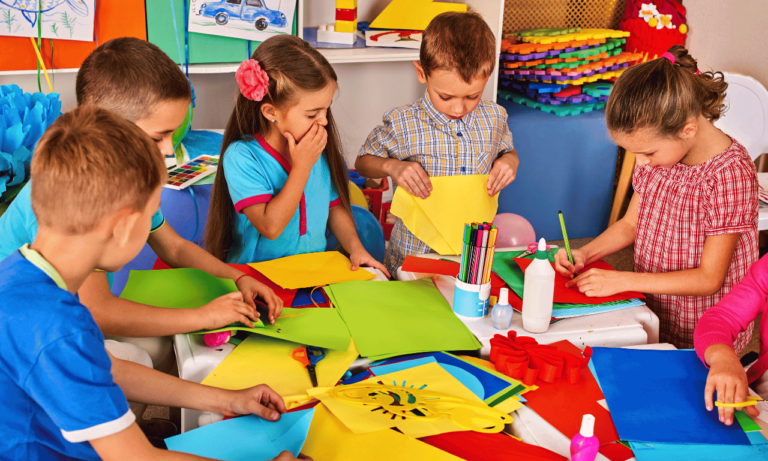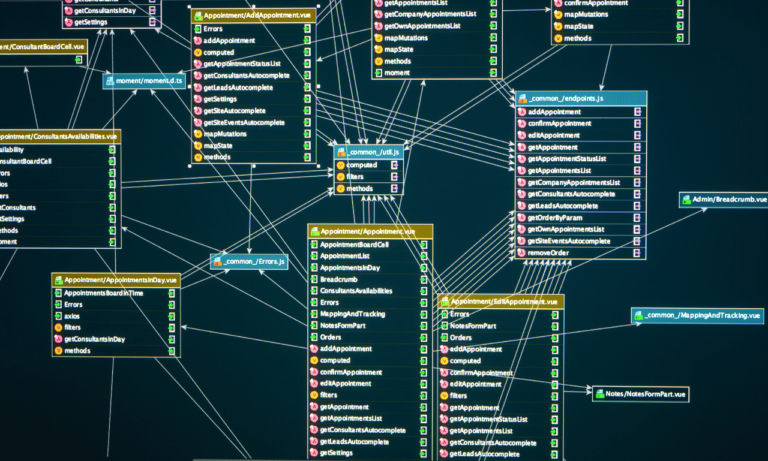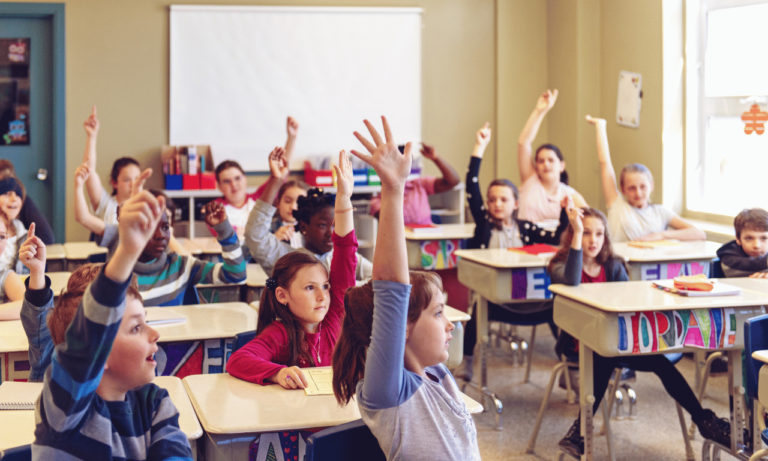Phone:
(+65)8319-0742
The landscape of education is undergoing a revolutionary change with the introduction of the Collaborative Educational Framework, a catalyst for reinvigorating student engagement and enthusiasm. This forward-thinking model acknowledges each learner’s inherent potential, fueling their curiosity and passion for knowledge while skillfully steering them towards mastery and personal growth. Amidst current educational hurdles intensified by global challenges, it has become evident that fostering an environment rich in student engagement techniques and interactive educational resources is not only beneficial but essential.
Addressing the eclectic needs of todayâs learners requires an approach that transcends traditional classroom dynamics, thereby putting a premium on collaborative, community-backed initiatives to guide students through their academic endeavors. The Collaborative Educational Framework is a robust response to this need, offering custom-tailored support and celebrating individual milestones, ensuring that education is as invigorating as it is informative.
Key Takeaways
- Collaborative Educational Frameworks put a spotlight on the individual strengths of learners.
- Effective student engagement techniques are crucial for the renewed interest and immersion in learning.
- Interactive educational resources play a pivotal role in sustaining students’ attention and facilitating deeper understanding.
- Community support and tailored mentorship are essential elements for fostering a supportive educational atmosphere.
- The celebration of personal milestones within the educational journey is vital for student motivation and self-esteem.
- Modern educational challenges call for innovative frameworks that prioritize student needs and learning styles.
Understanding the Current Challenges in Education and the Need for Change
Today’s education landscape presents a myriad of challenges that necessitate an immediate and decisive shift in teaching and learning methodologies. As we navigate through the complex terrain of educational challenges, the overarching goal is to transition toward student-centric approaches that respect and respond to the individual learner’s journey. Such a transformation enables not only the accommodation of diverse learning needs but also the crafting of personalized educational experiences that resonate with each student.
The Struggles Students Face in Traditional Learning Environments
Traditional learning environments are often rigid and prescriptive, limiting the application of collaborative teaching methods which could otherwise enhance the educational experience for students. Within these old-school systems, students might feel pressured to adapt to a predetermined pace and style of learning that doesn’t align with their abilities or interests. This misalignment can lead to students feeling disconnected from their educational journey, craving a more holistic educational approach that acknowledges their unique strengths and learning preferences.
Impact of the Pandemic on Student Development and Learning
The COVID-19 pandemic has further underscored the necessity for blended learning strategies that facilitate not only academic growth but also social and emotional well-being. In the wake of the pandemic, adaptive learning techniques emerged as an invaluable asset, enabling educators to meet students where they are and guide them through personalized learning paths. The pandemic has made it abundantly clear that we must equip our students with learning strategies that can weather any storm, leading them back to a love for learning that is deep-rooted and resilient.
The Overlooked Needs of Diverse Learners
Another significant imperative is the acknowledgment and support of diverse learners, whose educational experiences are often hindered by one-size-fits-all approaches. Leveraging collaborative learning resources is key to dismantling these outdated frameworks, thereby letting students with various learning needs thrive. Furthermore, educators are encouraged to adopt a holistic educational approach, ensuring that every individual feels seen, heard, and empowered to reach their potential in a supportive learning environment.
The Transformative Power of a Collaborative Educational Framework

At the heart of the Empower Approach lies the belief that a student’s academic journey should be as unique as they are. The utilization of collaborative learning resources shapes a path where students are not just recipients of knowledge but active participants in their education, using innovative student engagement techniques to deepen their understanding and foster independence.
When we consider collaborative learning environments, it’s not just about engaging students; it’s about weaving a fabric of support that includes peers, educators, and families. This network becomes a dynamic space for sharing insights, challenges, and successes, therefore empowering learners to conquer academic hurdles with confidence.
| Features | Benefits |
|---|---|
| Collective Support | Enriches the educational experience through diverse perspectives |
| Mentorship | Guides students through personal and academic challenges |
| Focus on Executive Functioning | Enhances organizational skills essential for success |
| Social-Emotional Learning | Builds empathy and interpersonal skills for holistic growth |
| Developmental Approach | Aligns with student growth stages for tailored learning experiences |
The integrated focus on a student’s entire ecosystem creates a nurturing environment that appreciates individual strengths while simultaneously building resilience and adaptability. In this multi-faceted framework, education becomes a journey we embark on together. It shifts the paradigm, making every classroom a space where learners are equipped not just for academic challenges but for a lifetime of empowered decision making and personal growth.
In conclusion, as we embrace the Empower Approach, every aspect of collaborative learning resources and student engagement techniques becomes a stitch in the broader tapestry of student success, fostering an education that is as boundless as the learners it aims to uplift.
Integrating Technology and Collaborative Teaching Methods for Enhanced Learning

The advent of education technology has marked a pivotal shift in teaching methodologies. Crafted to build bridges between knowledge and learners, these digital advancements pave the way for interactive educational resources to become more accessible. Educators who harness digital teaching skills are leading the evolution towards an interactive and productive academic environment where enhanced student participation is the norm.
Fostering a flexibility in education, these tools are not limited to serving as gadgets of convenience but become instrumental in executing effective blended learning strategies. The synergy of traditional and digital modes of teaching invites a level of adaptability and personalization previously unimaginable, driven by digital classroom tools and adaptive learning techniques.
Leveraging Education Technology for Interactive Learning
Interactive learning is redefined when education technology comes into play. Through an abundance of tools and resources, students can engage with material on a profound level. Simulations, interactive boards, and multimedia presentations are just a few ways that modern classrooms can ignite the curiosity and retain the attention of learners, ensuring that the educational process is not just informative, but also captivating.
The Role of Online Learning Platforms in Student Engagement
When it comes to student engagement, online learning platforms have proven indispensable. Their value lies in their innate ability to mold to the student’s needs â offering tailored content, personalized feedback, and on-demand resources that foster a sense of autonomy and drive within the learning experience. Teachers become architects of a supportive realm where each student’s participation is vital, using these platforms to monitor progress and lead students towards their educational targets.
Blended Learning Strategies and Digital Classroom Tools
Today, blended learning strategies are smoothing the transition between home study and in-school instruction. This hybrid educational model leverages both physical and digital experiences, enabling students to benefit from a multifaceted approach to learning. Digital classroom tools, from learning management systems to interactive whiteboards, allow for a dynamic, student-centered classroom, where content is not just delivered but interacted with, digested, and applied in real-life contexts.
As education continues to evolve, the integration of these sophisticated tools and methodologies empowers both students and teachers to reach new heights in academic achievement and prepares our youth for the digital future ahead.
Empowering Teachers Through Collaborative Professional Development Initiatives

In the realm of education, the adoption of participative leadership is pivotal, not only for a harmonized classroom but also within the sphere of teacher professional development. By instilling the principles of shared decision-making, educational institutions bolster a culture where transformative learning is the norm, and proactive idea exchange shapes the future of 21st-century education.
Adopting Participative Leadership in Educational Settings
Participative leadership within educational frameworks encourages teachers to voice their insights and collectively devise solutions for teaching challenges. This approach not only refines effective teaching practices but also instills a sense of ownership and responsibility among educators towards their professional growth and the success of their students.
Teacher Capacitation for the 21st Century: A Global Perspective
The integration of global teaching standards and digital teaching skills into professional development programs is indispensable for teachers to remain at the forefront of instructional excellence. As classrooms evolve, these capacitation efforts must align with the complexities of a digitized world, ensuring that educators are adept at preparing students for future societal and technological shifts.
Making Professional Learning Communities Work
At the core of collaborative professional development, Professional Learning Communities (PLCs) are gaining recognition for their effectiveness in teacher capacitation. As dynamic collectives for knowledge sharing, PLCs are instrumental in fostering an environment wherein educators share, refine, and implement effective teaching practices, thus paving the path towards transformative learning experiences.
| Element of PLC | Benefits | Challenges | Strategies for Success |
|---|---|---|---|
| Shared Vision | Cultivates a unified approach to student achievement | Aligning diverse objectives | Regular goal-setting meetings and consensus activities |
| Collective Learning | Promotes continuous teacher education and adaptability | Coordinating schedules for collaboration | Utilizing digital platforms for communication and resource sharing |
| Supportive Conditions | Builds trust and encourages open dialogue | Creating a non-judgmental environment | Establishing norms and celebrating successes |
| Shared Practice | Enables practical application of new teaching methods | Measuring the impact of new strategies | Peer observations and feedback sessions |
Conclusion
The shift toward a Collaborative Educational Framework represents a significant step in addressing the complexities of today’s educational landscape. Such a framework provides a robust foundation for both educators and students, affirming the value of student engagement techniques and the creation of collaborative learning environments. Through this comprehensive approach, education transcends traditional teaching methods and evolves into a dynamic process that reflects the multifaceted nature of the individual learner. The framework’s focus on inclusivity and personal growth paves the way for education systems that accommodate diversity and adapt to each student’s unique pathway to success.
Moreover, the integration of technology within this framework has unlocked new possibilities for interactive learning experiences, which resonate with the digital natives of our era. By leveraging these innovative tools, educators can facilitate a richer, more engaging learning environment that inspires students to actively participate and take charge of their educational journeys. The emphasis on nurturing the whole child ensures that learners are equipped not only with academic knowledge but also with the life skills required to navigate the complexities of the modern world.
In essence, the Collaborative Educational Framework is about redefining the boundaries of education, acknowledging the invaluable role teachers play in cultivating this environment, and ultimately, empowering every learner. This thoughtful combination of collaboration, engagement, and technology embodies an educational revolution that holds the promise of nurturing well-rounded, capable individuals ready to contribute to society’s progress. It sets a precedent for future educational endeavors, where the goal is not merely academic achievement but the fostering of lifelong learners who can flourish in all aspects of their lives.
FAQ
What is a Collaborative Educational Framework?
A Collaborative Educational Framework is an approach in education that emphasizes the joint efforts of students, educators, and community members in the learning process. It encourages interactive educational resources, student engagement techniques, and collaborative teaching methods to create a more inclusive, supportive, and customized learning environment for all students.
How do traditional learning environments fail to support all students?
Traditional learning environments often struggle to cater to the diverse needs of students, especially those with unique learning styles or challenges like ADHD. These environments are generally characterized by a one-size-fits-all approach, where the pace and style of teaching may not suit every learner, leading to students feeling misunderstood and unsupported in their educational journey.
What impact has the pandemic had on student learning and development?
The pandemic has significantly disrupted the continuity of education and the developmental progress of students. It has led to learning gaps, emotional stress, and a disconnection from the learning process for many students. There is now a heightened need for adaptive learning methods, holistic educational approaches, and resources to help students reengage with learning effectively.
Why is it important to consider the needs of diverse learners?
Considering the needs of diverse learners is crucial because each student has a unique set of strengths, weaknesses, and learning preferences. A Collaborative Educational Framework that offers personalized educational experiences and accommodates diverse learning needs can help all students to reach their potential and feel valued within the educational system.
How can education technology enhance the learning experience?
Education technology can enhance the learning experience by providing interactive educational resources that make learning more engaging and accessible. Technology supports blended learning strategies, gives flexibility to students to learn at their own pace, and allows educators to extend the classroom beyond physical boundaries, fostering enhanced student participation and adaptive learning techniques.
What is the role of online learning platforms in student engagement?
Online learning platforms play a crucial role in student engagement by offering a range of interactive materials and personalized pathways for learning. These platforms allow students to work at their preferred pace and can assist teachers in assuming a mentorship role, which makes the learning experience more inclusive and encourages active participation.
Can blended learning strategies benefit all students?
Yes, blended learning strategies benefit all students by combining the effectiveness of in-person teaching with the adaptability of digital resources. These strategies provide a flexible and dynamic approach that can be tailored to individual learning styles, fostering a more personalized and supportive educational environment.
How can participative leadership transform educational settings?
Participative leadership in educational settings transforms the dynamic by including diverse perspectives and collaborative decision-making. This leads to more meaningful, inclusive, and effective educational strategies that can benefit teachers and learners alike, promoting a community-based approach to professional development.
What skills are essential for teachers in the 21st century?
Teachers in the 21st century need to possess a range of skills, including proficiency in digital teaching skills, the ability to foster employability skills like critical thinking and creativity, and a commitment to sustainable education practices. Additionally, teachers should be able to adapt their teaching methods to ensure they meet the demands of a globalized and technologically advanced society.
How do Professional Learning Communities (PLCs) benefit educators?
Professional Learning Communities (PLCs) benefit educators by providing a platform to collaborate, share knowledge, and support one another’s professional growth. They enable the sharing of innovative teaching methods and offer a collective response to the challenges of modern education, promoting continuous improvement and effective teaching practices.

Work at Height Standard: Safety Guidelines Explained
Working at height means doing a job where you could fall and get hurt. In general industry, the Occupational…

Efficient Drone Inspection Software Solutions
Reduce risk, increase efficiency, and improve quality with Skylineâs virtual inspection solutions….

Stair Scaffold Solutions for Safe Work Access
In the world of construction and maintenance, ensuring safe and efficient work access is paramount. When…

Industrial Scaffolding Solutions & Services
Welcome to our comprehensive guide on industrial scaffolding solutions and services. In the field of…

Essential Construction Scaffolding Safety Tips
Ensuring construction site safety is of utmost importance when working with construction scaffolding….
No posts found

















